2024
Type of resources
Topics
Keywords
Contact for the resource
Provided by
Years
Formats
Representation types
Update frequencies
-
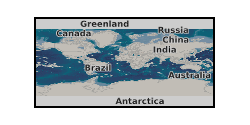
The dataset consists of eleven spreadsheet tabs, each tab containing lipid biomarker palaeothermometry (air temperature reconstructions) and bulk organic carbon isotope data from individual lignites that are known to stratigraphically span the Cretaceous-Palaeogene (K-Pg) boundary. Uncalibrated, raw biomarker distributions (glycerol dialkyl glycerol tetraethers; GDGTs) are provided, as well as the calculated calibration outputs. Site coordinates are: West Bijou, Colorado (39°34'14'N, 104°18'09'W), Sussex, Wyoming (43°39'40"N, 106°19'06"W), Pyramid Butte, North Dakota (46°25'03'N, 103°58'33'W), Hell Creek Road, Montana (47°31'35"N, 106°56'23"W), Rock Creek West, Saskatchewan (49°02'20"N, 106°34'00"W), Wood Mountain Creek, Saskatchewan (49°25'20"N, 106°19'50"W), Frenchman Valley, Saskatchewan (49°20’56"N, 108°25’05"W), Knudesn’s Coulee, Alberta (51°54’27"N, 113°02’57"W) Griffith’s Farm, Alberta (51°54’47"N, 112°57’51"W), Coal Valley Cores (GSC CV-42-2, Cores 1 and 2), Alberta (53°05’02"N, 116°47’ 40"W) Police Island, Northwest Territories (64°52'42"N, 125°12'33"W).
-
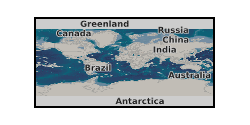
Zircon U-Pb isotope data are presented for eight plutonic rocks from the Masirah ophiolite and one plutonic rock from the Ra's Madrakah ophiolite (south east Oman). These data constrain the age of formation of the two ophiolite nappes exposed on Masirah Island (early Cretaceous), whereas two intrusions with younger ages (late Cretaceous) overlap with the proposed emplacement age of the ophiolite. The data cover two sites in the Masirah Lower Nappe, two sites in the Masirah Upper Nappe (on Masirah Island, off the SE coast of Oman) and one site on Ra's Madrakah (on the mainland of Oman). The interpretation and discussion of these data form part of a manuscript submitted to Geochemistry, Geophysics, Geosystems. Data collection was done using chemical abrasion isotope dilution thermal ionisation mass spectrometry (CA-ID-TIMS) at the NERC Isotope Geosciences Laboratories at the British geological Survey, supported by NERC Isotope Geosciences Facilities award IP-1919-0619. This work resulted from a PhD project funded by NERC GW4+ DTP grant NE/L002434/1.
-
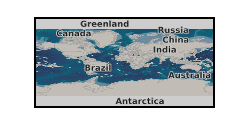
High-precision CA-ID-TIMS (Chemical Abrasion Isotope Dilution Thermal Ionization Mass Spectrometry) Uranium-Lead geochronology of zircon, extracted from igneous plutonic and mineralised porphyry intrusions in the Rio Blanco-Los Bronces Cu Porphyry area, Chile. Eleven parent samples cover an age range of ca. 14 Ma to ca. 5 Ma. Sample Identifiers correspond to the NERC Highlight topic consortium project FAMOS (From Arc Magmas to Ores) samples from the Natural History Museum component of the project and Large et al.(2024) J. Pet, where full rock types, geo-references, petrography, and geochemistry of parent samples can be found in addition to zircon Cathodoluminesence and SEM characterization of zircon of samples, and the corresponding zircon trace element analyses (inclusive of U-Pb) by laser ablation ICPMS. This data provides insights into the crystallisation of zircon and timescales of porphyry copper deposits.
-

Analyses of volcanic glasses from a range of oceanic islands (Samoa, Cook-Australs, Iceland) and mid-ocean ridges (Reykjanes Ridge). Each glass sample was analysed for the concentrations of >60 elements, using a combination of electron probe microanalysis (EPMA), laser ablation inductively coupled plasma mass spectrometry (LA-ICP-MS) and secondary ion microprobe (SIMS) analysis. Detailed analytical techniques that were used to produce the data are presented in Wieser et al. (2020) and Reekie et al. (2019).
-

Major and trace element composition, and stable isotope data for whole-rock samples from alkaline rocks of the Chilwa Province. Samples collected between 2011-2021 in the Chilwa Alkaline Province, Malawi
-
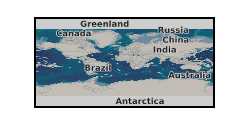
This deposit consists of a readme file, which describes the file 'simulationinput.in'. This is a simple text file that contains the information necessary to run any of the ab initio molecular dynamics computer simulations described in the paper that links to this deposit, using the CP2K software package. CP2K is open source. Paper in press: Mineral–water reactions in Earth’s mantle: predictions from Born theory and ab initio molecular dynamics, Fowler, S. J. and Sherman, D. M. and Brodholt, J. P. and Sherman, D. M. Geochimica et Cosmochimica Acta.
-
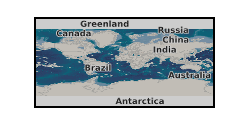
The MexiDrill core was dated using a range of methods, including radiocarbon. Samples of sediment were pretreated (acid-only) at the 14CHRONO Centre according to established protocol, and measured using Accelerator Mass Spectrometry (AMS). The plain-text file lists the uncalibrated AMS radiocarbon dates, with the following columns: UBA ID, date submitted, MexiDrill sample ID, radiocarbon age, and lab error.
-
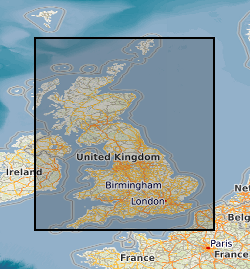
DiGBcoast v1.0, is a new supranational dataset documenting three decades of coastal change across Great Britain mainland (England, Scotland, and Wales) including the isle of Wight and Anglesey. This dataset has been produced using the publicly available optical Landsat-5,8 and Sentinel-2 missions over the period between 1984 to 2022 (38 years). It includes instantaneous waterlines and instantaneous tidally corrected to Mean Sea Level shorelines. DiGBcoast is made available to the public as free and open interactive data to support future coastal research and management across Great Britain.
-

This dataset spans the Sinemurian-Pliensbachian boundary of the Llanbedr (Mochras Farm) drill core that was drilled onshore in the Cardigan Bay Basin, Wales, UK. This dataset contains 1. Micro-, macro-charcoal data and palynofacies, obtained at the University of Exeter (Streatham campus), UK, 2. Clay mineralogical data (X-ray diffraction (XRD)) obtained at the University of Burgundy, France, in collaboration with Jean-François Deconinck, 3. Carbon-isotope data, TOC and carbonate content, obtained at the University of Exeter (Penryn campus), UK. The dataset was created within the scope of the JET project (Integrated understanding of Early Jurassic Earth system and timescale) - https://gtr.ukri.org/projects?ref=NE%2FN018508%2F This project has received funding from the International Continental Scientific Drilling Programme (ICDP) and the UK Natural Environment Research Council (NERC). The PhD-project within this dataset was created is funded by the University of Exeter, UK.
-
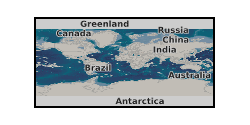
Isotope tracing data for 14C, 15N and 33P tracing between plants and symbiotic fungi in Lycopdiella inundata, Anthoceros and Phaeoceros sp. and Lunularia cruciata. All plants tested and traced in atmospheric CO2 conditions of 440 ppm [CO2] and 800 ppm [CO2]. Datasets includes total mass of plants and soils, Bq in each component of experimental systems and values in Bq and mg where appropriate.
 BGS Data Catalogue
BGS Data Catalogue